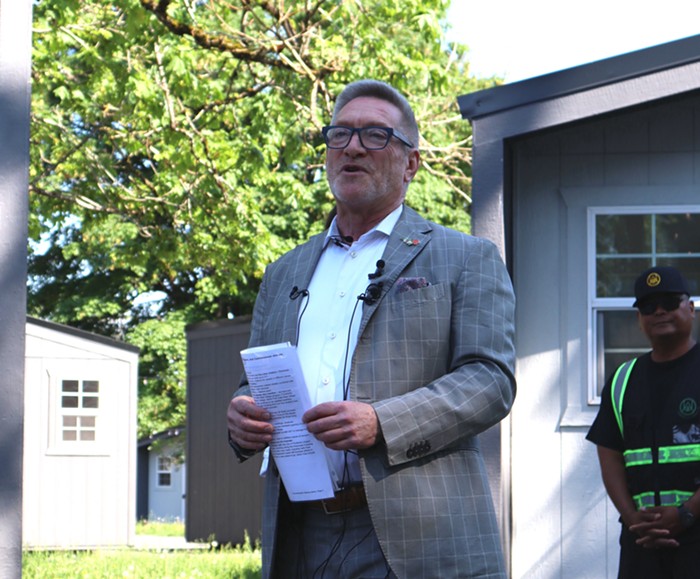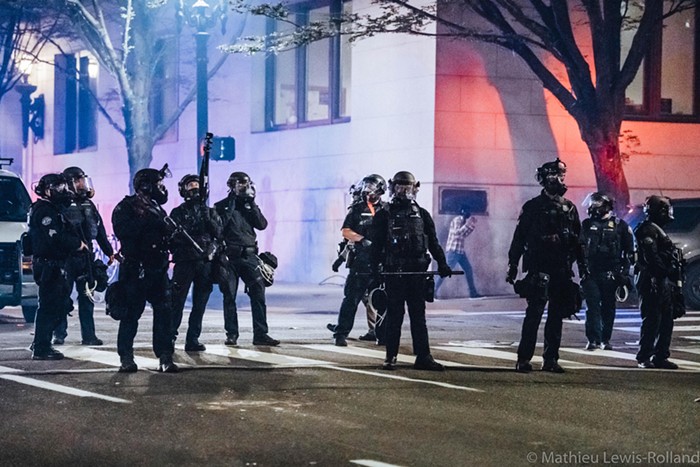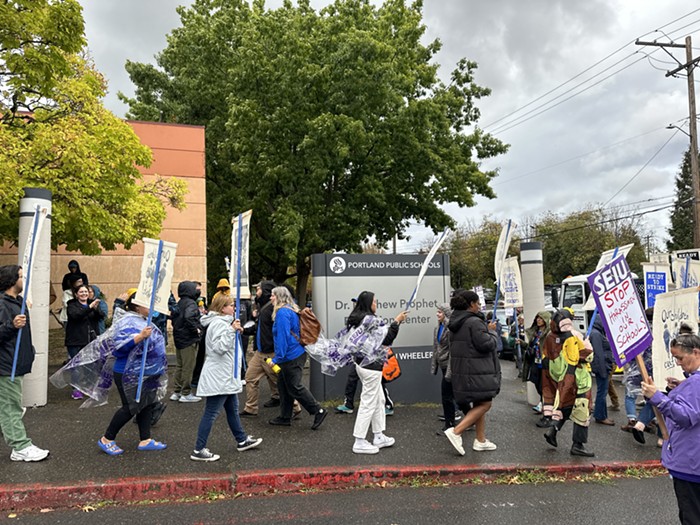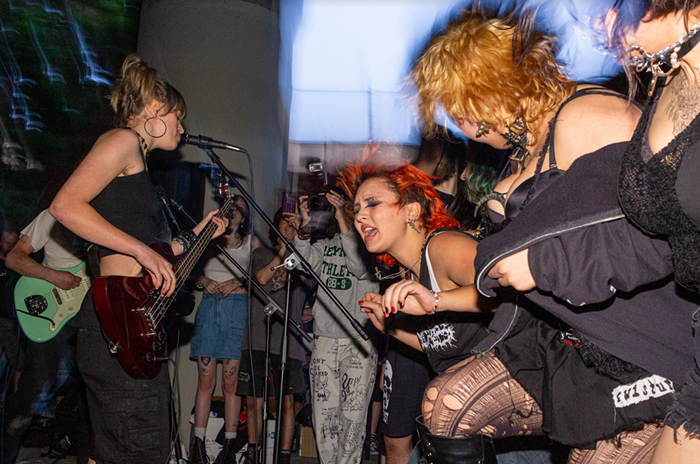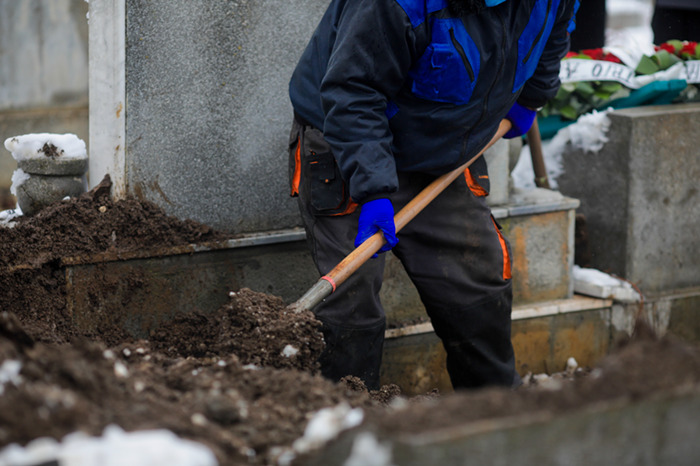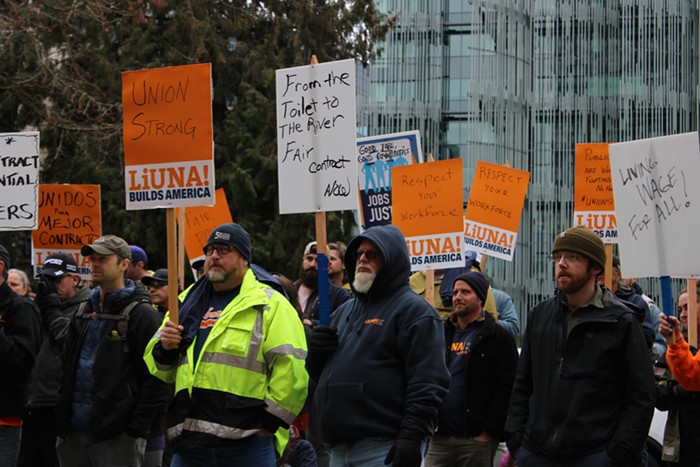WHEN PORTLAND'S police commissioner, Mayor Sam Adams, stood by his handpicked police chief, Mike Reese, in city hall on Monday, January 3, his voice quavered, just a bit, as he addressed a troubling surge of five officer-involved shootings over the past six weeks.
After three shootings in the final weeks of 2010—all of them involving men believed to be armed and mentally ill— Portland police were investigating two more on the first two days of 2011. The first, in which no one was struck by police bullets, came outside a nightclub on New Year's Day where a bouncer had been shot dead. The second, on SE 82nd, involved a knife-wielding homeless man with a troubled past.
Answering question after question, Adams hammered on one issue more than any other: recession-driven budget cuts that have forced thousands of mentally ill Portlanders to fend for themselves out on the streets. He also warned that more cuts are coming, especially as the legislature this year works to close a staggering $3 billion-plus deficit.
"The social safety net we've all relied on is becoming more and more frayed," he said, noting that some "of these folks needed the kind of public services that would have prevented them from getting into these situations in the first place."
According to a budget report released in November, the Oregon Health Authority is pondering hundreds of millions more in cuts for addiction treatment and the mentally ill. At their worst, the cutbacks could affect as many as 210,000 of Oregon's neediest residents. Those cuts piggyback on other reductions by Multnomah County, the region's primary social services provider.
Addiction services would be scaled back, community mental health programs would see millions less, and fewer treatment beds would be available for the most troubled patients.
That means more addicted and mentally ill people would be foisted onto police to handle—and leave the state so overwhelmed it would be "unable to meet its obligations to serve people who are court committed to treatment because they represent a danger to themselves and others," according to the report.
"What I hope is that we as a state have an adult conversation about the direction that we're headed," Adams said.
It's a disturbing and effective message. But some say it's also partly a public-relations push—an attempt to blunt inevitable outrage at a bureau that has repeatedly come under criticism over its use of force. And that hasn't been lost on some advocates for police accountability—many note that skimpy funding for mental health services has been an issue for decades.
"Why is that different?" Chris O'Connor, a public defender who also works with the Mental Health Association of Portland told the Mercury. "It's the same as it was in November [before the recent surge in shootings], and you didn't have dead people lined up in the morgue."
With virtually no chance of increased funding for treatment anytime soon, accountability advocates suggest looking at something they also say hasn't changed: police tactics that allow calls to turn tragic. Some call for Taser cameras, which would allow cops to record how an encounter escalates. Others say officers are still too willing to fire away when "less-lethal" weapons like Tasers and beanbag shotguns fail.
Significantly, on Monday Chief Reese promised a "global" study of police shootings since last year. (Earlier in 2010, police shot three other men who were either distraught or chronically ill.) Reese also announced an initiative to research how cops in other cities keep calls from turning deadly. The city may also re-train 911 dispatchers so they ask for—and pass on—more information to police officers responding to calls. And police spokesman Sergeant Pete Simpson said the bureau is working to formally tabulate how many of its 400,000-plus annual calls involve the mentally ill.
Those efforts would follow others in recent years to stem the tide of police shootings, from crisis training for every officer to joining a national study of police encounters with the mentally ill. The bureau also has assigned a day-shift officer from its downtown precinct to a roving unit also staffed by a mental health worker—although Reese acknowledged Monday that the crisis unit isn't allowed at calls where weapons have been reported and that there may not be money to expand it to other shifts and precincts.
Both Adams and Reese pledged to unveil any recommendations within a year, possibly faster than the bureau's internal probes of the shootings.
"We'll be doing that in a quicker turnaround than ever before," Adams said.
But while Reese called the number of recent shootings "unacceptable," he also defended the officers who fired the shots. He noted that in two of the past three shootings, officers used Tasers and beanbag shotguns before resorting to their rifles and handguns.
"Officers are forming good tactical plans but dealing with people who are motivated and armed," Reese said.
No one disputes that more and more officers have been placed in the awkward position of engaging Oregonians who have fallen through the cracks.
In all, since last January, five people were ruled dead by police bullets—Aaron Campbell, Jack Collins, Keaton Otis, Darryel Dwayne Ferguson, and the 60-year-old man in the most recent shooting on SE 82nd. Another man, Craig Boehler, was seriously wounded but was ruled to have died, instead, of smoke inhalation. Court records and statements from family members show most of those men, including Marcus Lagozzino, wounded by police on December 27, had grappled with addiction and mental health issues.
During the recent run of shootings, Dan Handelman of Portland Copwatch has repeatedly questioned whether officers are making the most of their crisis training. He remembered a 50-day stretch in 2005 that saw five shootings, but only two dead—and that was before training was put in place.
"This is unprecedented, I would say."
Handelman also questioned whether the tactical plans were really as good as Reese says. Three of the eight shootings involved men who cops said were rushing them with a blade. Handelman wondered why plans in those cases—especially when Lagozzino, holding a machete, was shot at less than a minute after officers spotted him—didn't include taking cover or allowing for more distance in the first place.
"There's probably alternatives to saying, 'He ran at me and I had to shoot,'" he said, "especially if the plan didn't include 'what if he runs at us with a machete.'"

